Rover Now
No more worrying about finding the right walker for your pet's individual needs. First conceptualized as “Airbnb for dogs,” Rover is the world's largest marketplace for pets offering boarding, house sitting, daycare, dog walking, and drop-in visits in 34,000 cities. I consulted Rover on how to increase trust with first-time users of its newest on-demand dog walking service - Rover Now.
Client
Rover
Year
2019 (Capstone)
Role
UX/UI
User Research
Team
Niyati Gandhi
Rosie Sabaric
Julie Talosig
Jen Revoltar
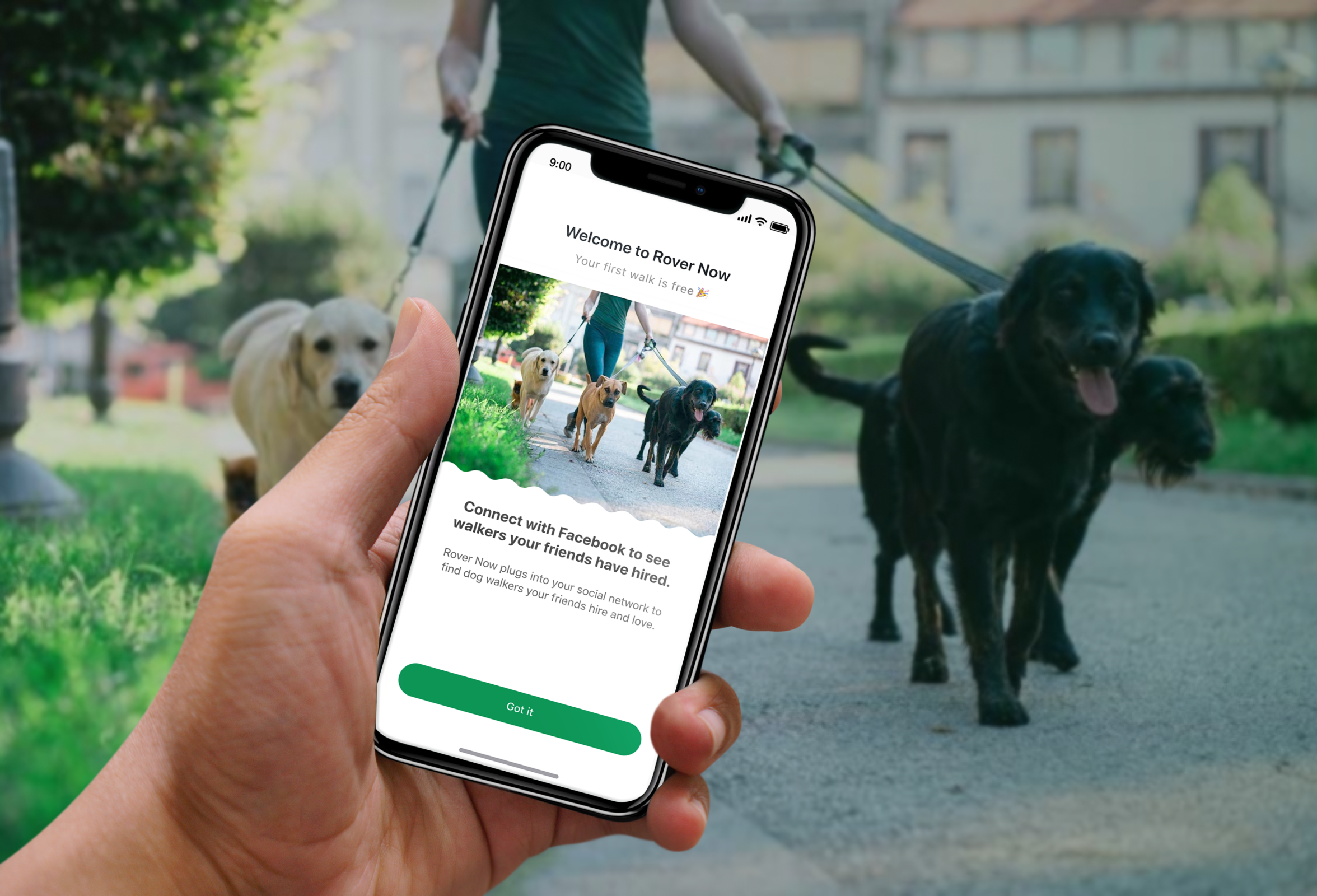
Problem
How do we help first-time users trust Rover Now to assign the right walkers for their pet's individual needs?
People treat their pets as family and were concerned with the idea of leaving their loved ones with someone they haven't personally vetted. Previously, Rover allowed dog owners to browse walkers' profiles and contact them before booking the walk. This gave busy dog owners a choice but made booking time-consuming. To solve this, Rover launched 'Rover Now,' an on-demand dog walking service that assigns a walker with a verified background based on location, time, and duration of the walk. Although Rover Now makes dog walking simple and quick, dog owners lose control over who enters their home to walk their pets— which is a massive hurdle of trust.
Like children, dogs are vulnerable in unfamiliar hands. Rover builds trust by prioritizing pet safety in two ways. 1) The Rover Guarantee reimburses dog owners for service-related incidents. 2) Training and background checks for Rover walkers. We provided a psychological safety net by connecting dog owners with walkers who are the right fit for their dog's nuanced needs, behavior, and lifestyle.
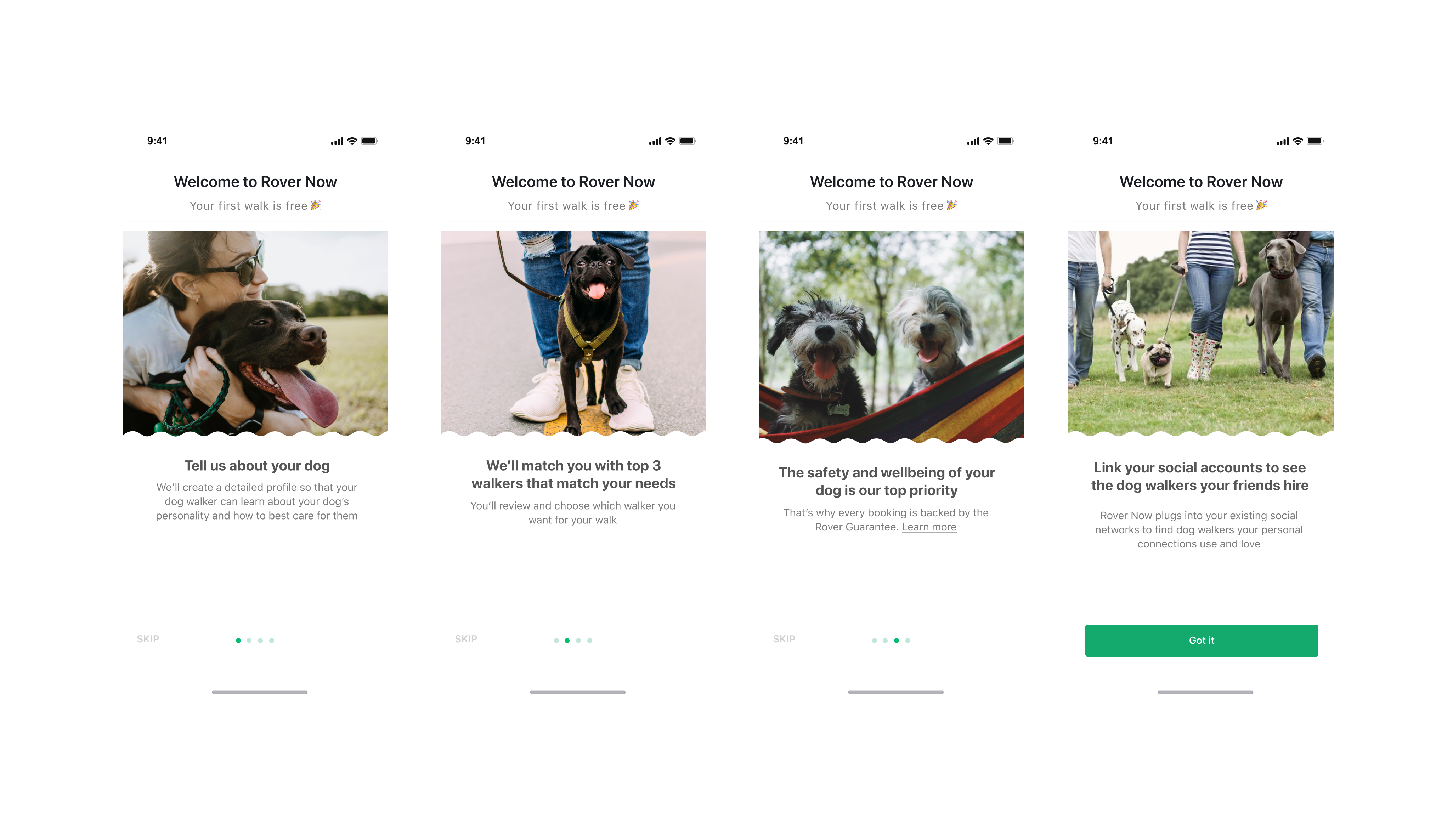
Users say their walkers "cut corners"
People treat dogs as family members. 83% of dog owners think their walkers “cut corners”.
Borrow trust from users' friends and family
Leveraging Rover's existing user base, I recommended adding close integration with Facebook during onboarding. Previously, this was limited to the login. Previously, it was only for login. Users can now connect with Facebook to see walkers their friends have previously hired and obtain referrals.
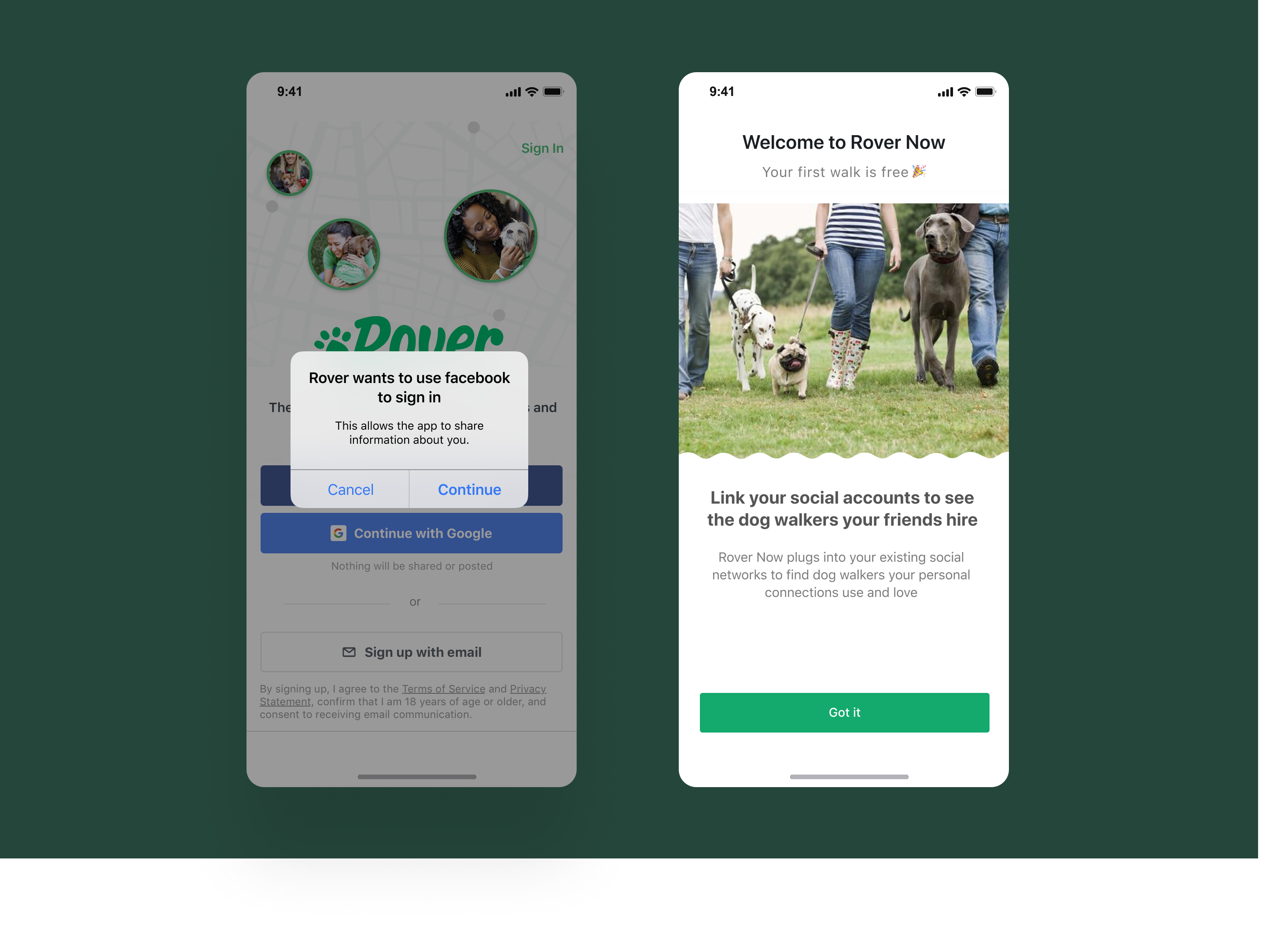
Users don't trust Rover for their dog's nuanced needs
76% of users believe that the assigned walkers can not meet the specific needs of the dog, particularly when the dog is ill, hyperactive, and quirky.
Match dogs with the right walker for their needs
Previously, the intake process felt transactional. I suggested expanding the intake process to include more granular information regarding pets' behavior, activities, and medications. This potentially helps users trust Rover for understanding their individual pet needs and recommend the right walker.
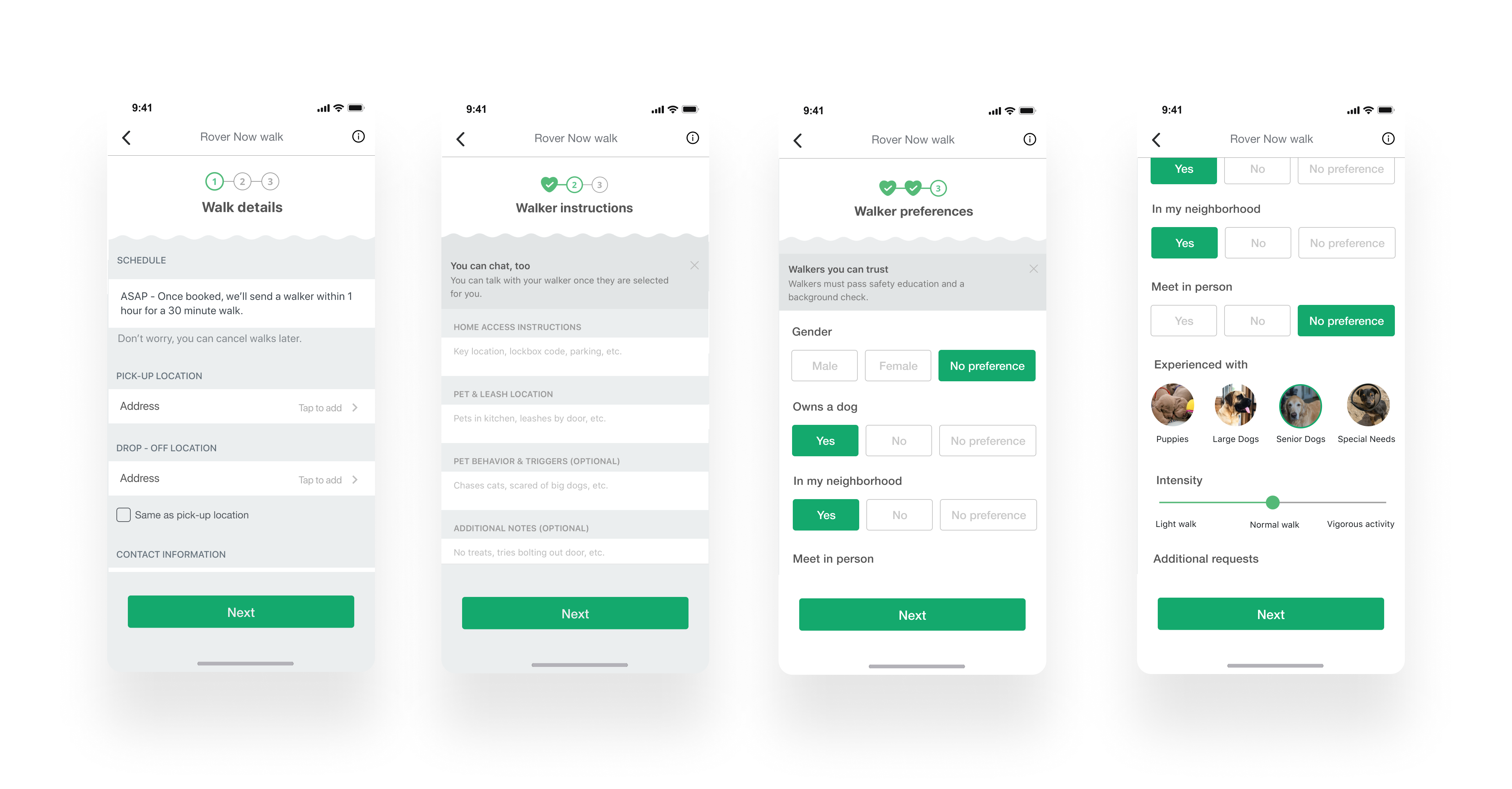
Give users control over walker selection
93% of users say rating and reviews are the #1 decision factor when choosing a walker
Walker profile
Previously, users had no choice over walker selection. To provide users more control over walker selection, I recommended adding three additional features:
- Top 3 walker recommendations based on the intake process
- Key decision influencers (star ratings, reviews, number of dogs walked, friends who have used the same walker)
- New walker profile provides an easy way for walkers to introduce themselves and connect before booking a walk
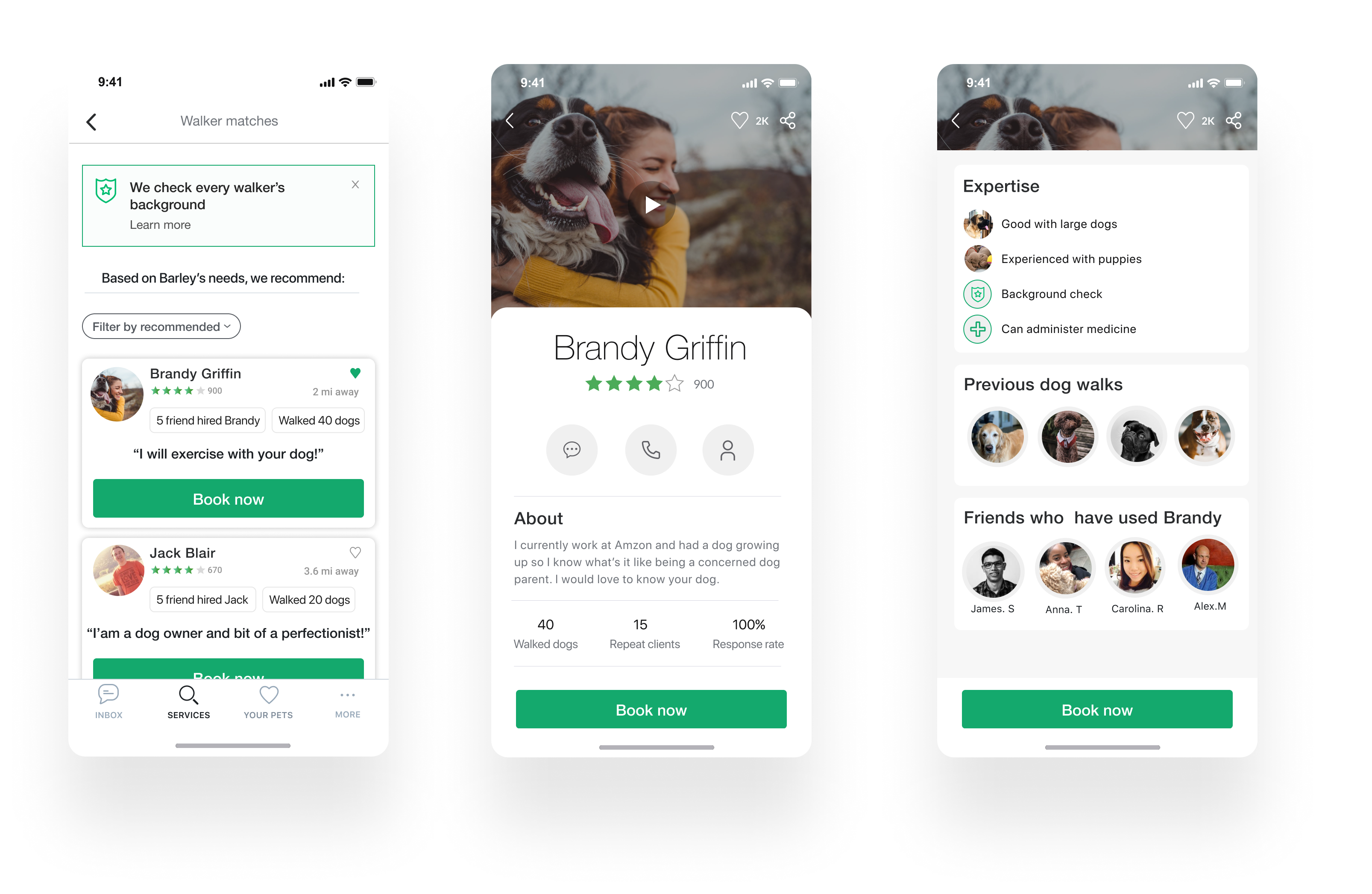
Process
With little prior data to draw upon and trust being so subjective, finding strategies to enhance trust in 10 weeks is challenging. We used the Lean UX cycle to deliver our MVP in a timely manner. This allowed our team to work iteratively, test rapidly and ensure we were focused on addressing the right problems. At the end of the project, we presented our research and design recommendations to Rover's Design Director.

User Research
Trust means different things to different people. Our research evaluated user perceptions of trust, how businesses develop trust, and what users look for in a dog walker. We interviewed 15 Rover users and conducted a survey with 70 responses to understand both qualitative and quantitative aspects of this marketplace. After synthesizing our research: the biggest pain point was clear: users wanted more control and choices when choosing their walkers.
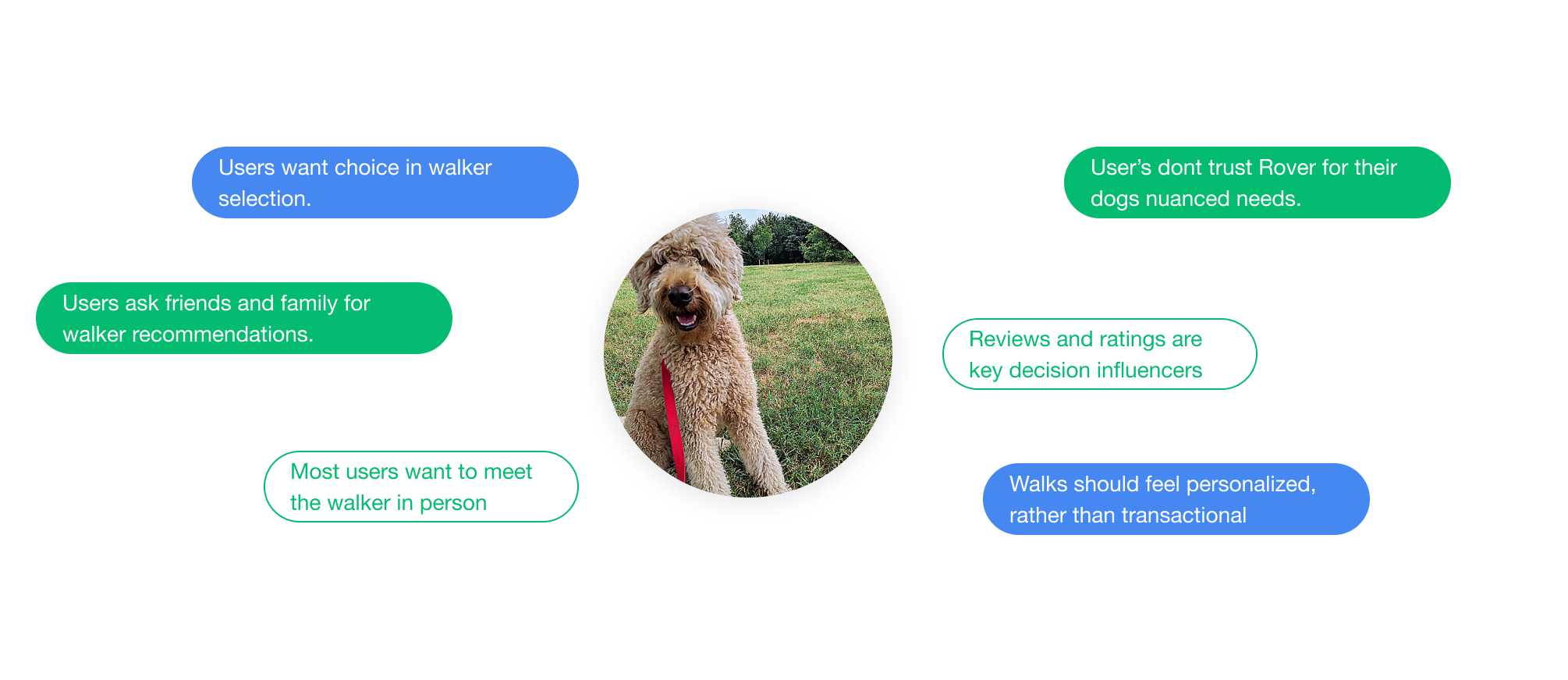
"I got stood up by a walker and Wag ended up sending an old man who only had one or two ratings. I saw on my home camera that he was playing with my cats and completely ignoring my dog. He also went into my house to use the bathroom, which made me super nervous"
Rover Now user
Personas
I developed three personas to reflect common user desires, pain points, and go-to solutions for dog owners.
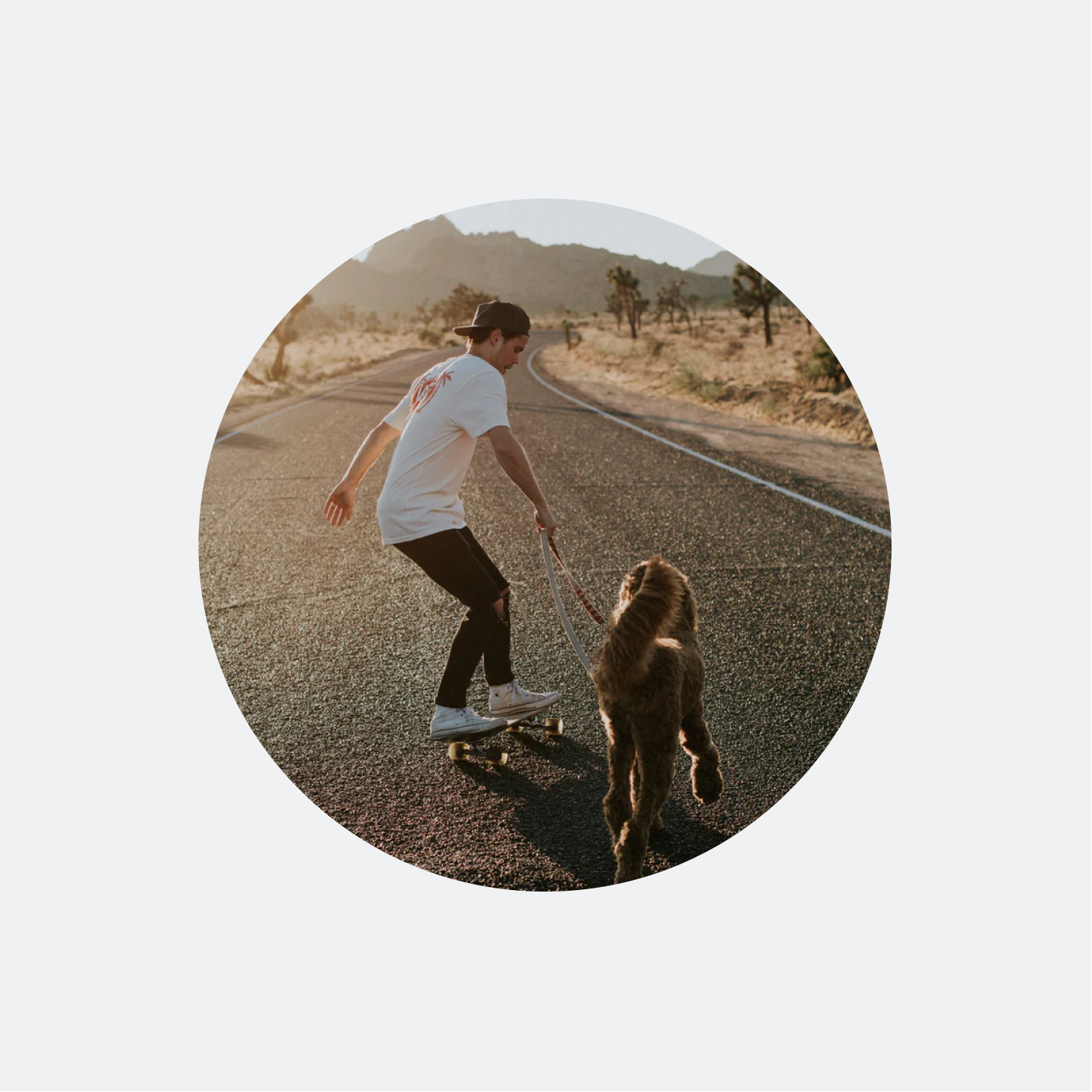
ALICE JOHNSON
"
I’d never consider leaving my dog with someone I haven’t personally vetted
Need
An experienced walker to walk her dog while at work
Problem
No close friends or family nearby. Skeptical of what walkers put on their profiles
Solve
Meets walker before booking

DAVID NORTHON
"
My dog has a quirky personality. It takes a while to find the right person to care for him
Need
Find a walker with the right personality and experience
Problem
Can be time-consuming to find the “perfect” walker that meets his dog's unique needs
Solve
Spends lot of time browsing profiles and setting up trial runs
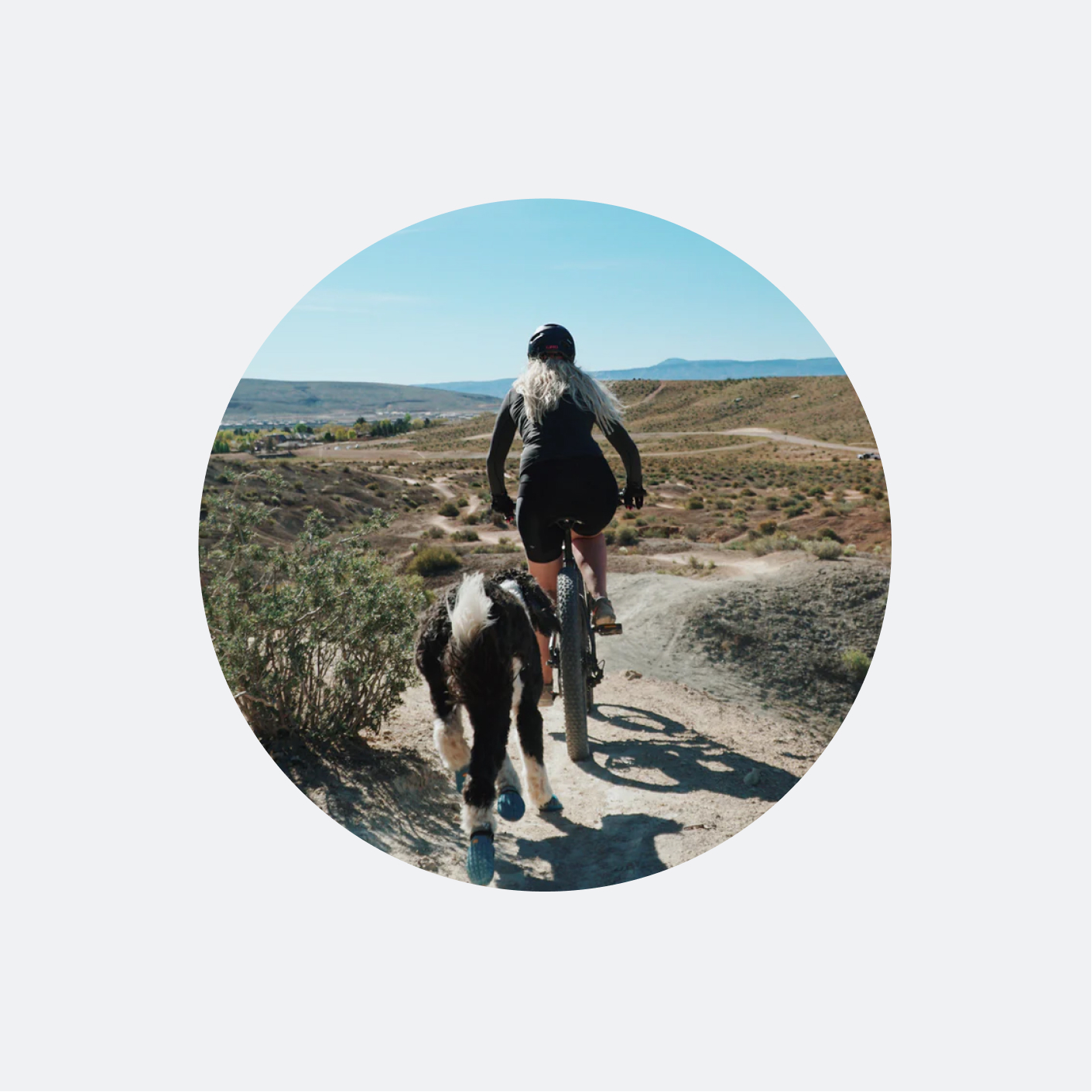
ALEX FORD
"
If I can’t be home to walk Max, I usually need to find someone fast
Need
Find a walker quickly and easily
Problem
Frequently changing the walkers and last minute bookings are stressful for him and the dog
Solve
Calls and asks around until he finds someone available
Market Research
We looked at how other dog walking services build trust with their customers to better understand Rover's competitive advantage. Aside from these services, I was curious about how other industries, such as on-demand nanny services, built stronger consumer trust. In the care of strangers, children, like dogs, are highly vulnerable. Most of the smaller pet care services prioritized end-to-end transparency in their safety initiatives to create sitter trust.

Trust impactors
- Tagline / Sales Hook
- Transparency
- Safety & Vetting Process
- Online Reviews
- Social Network
- Ability to choose walkers
- In-person meet & greet
- Personalization
Iterations
To generate concepts, we sketched and prototyped a series of ideas that focused on making the intake process more personalized, walker recommendations, and new walker's profile. We then improved on these through internal crit sessions, user testing, and integrating with the existing user flow. We started digitizing design and prototyping after we validated these ideas with users.
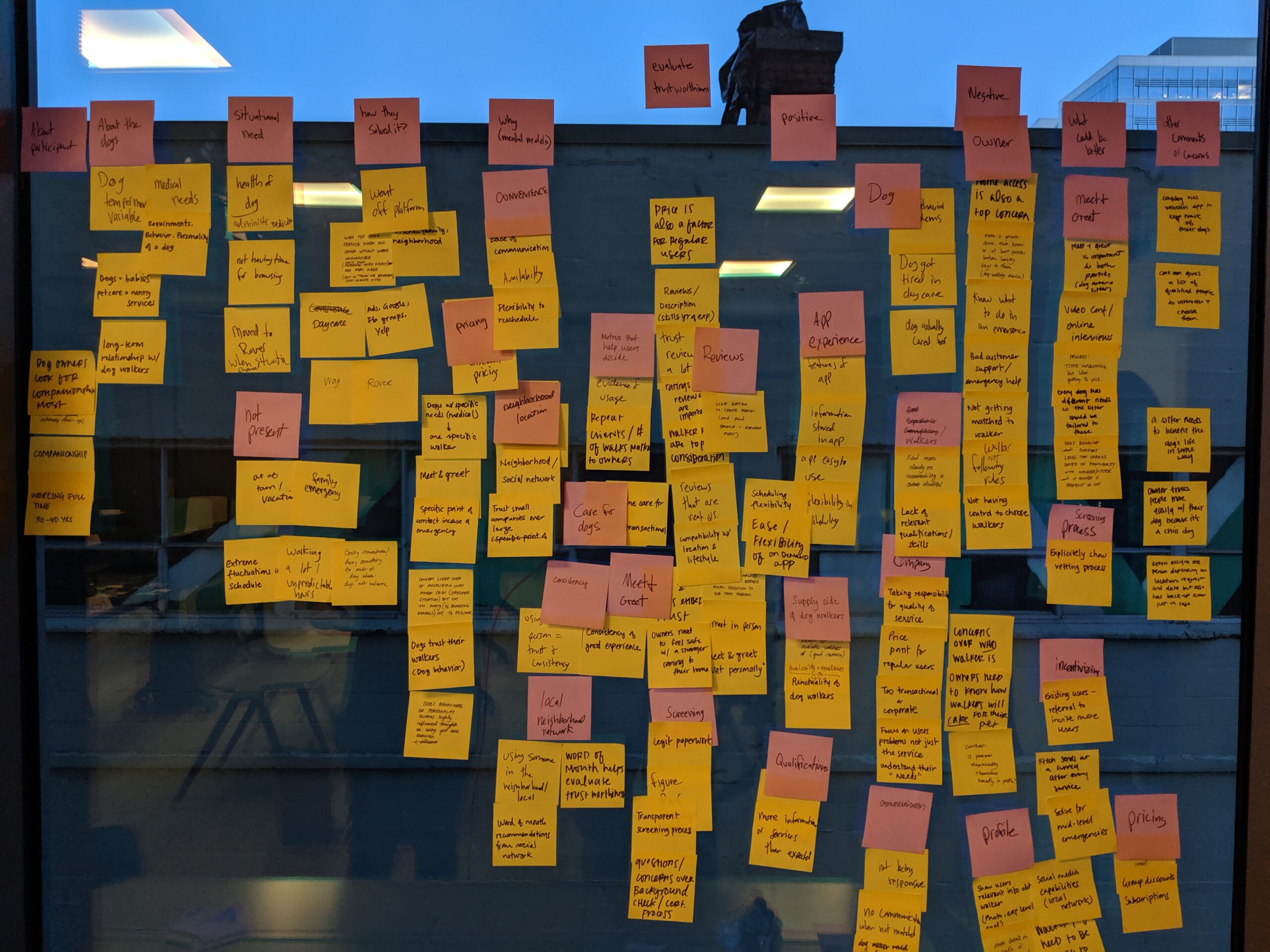
Quick ideations
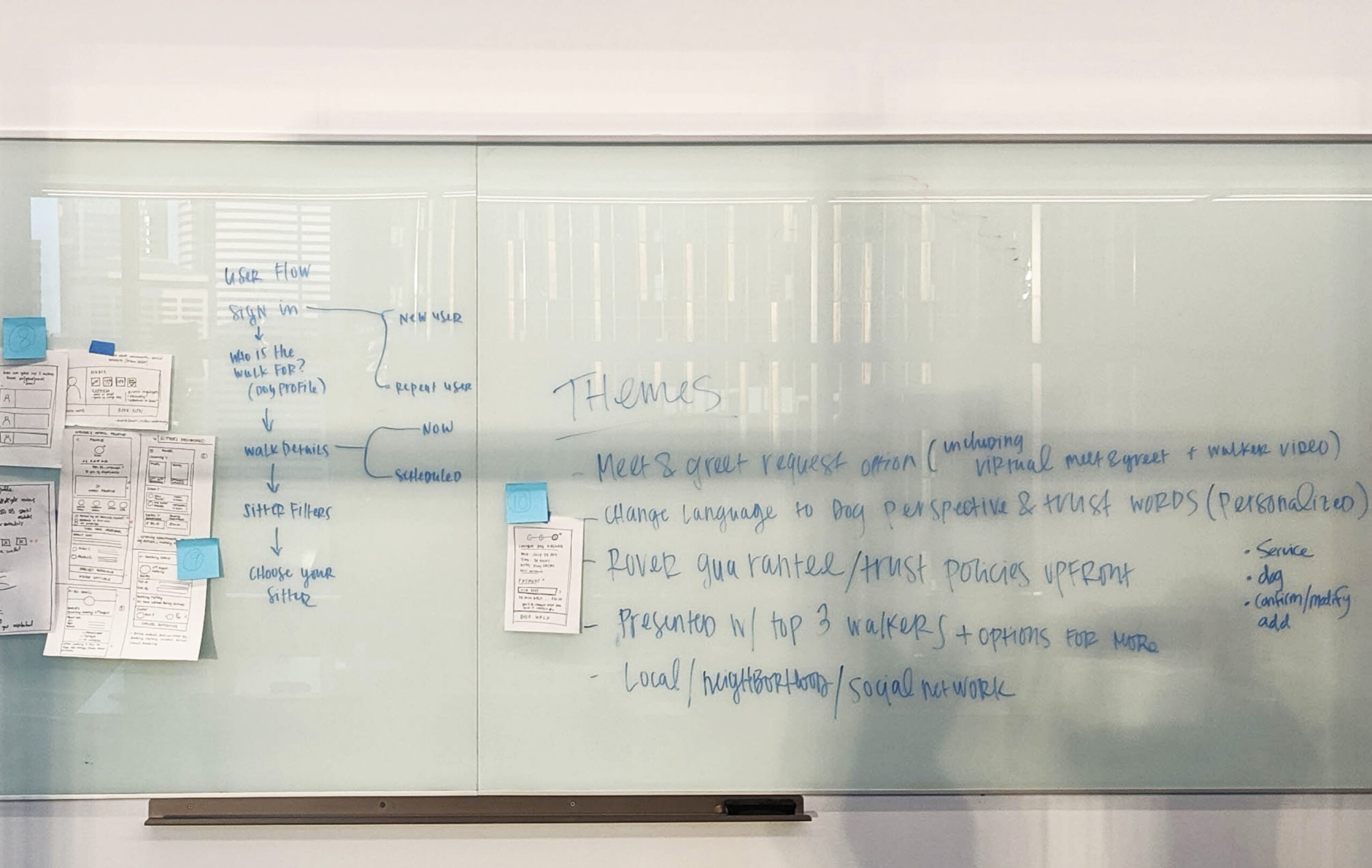
Mapping user journeys and key themes
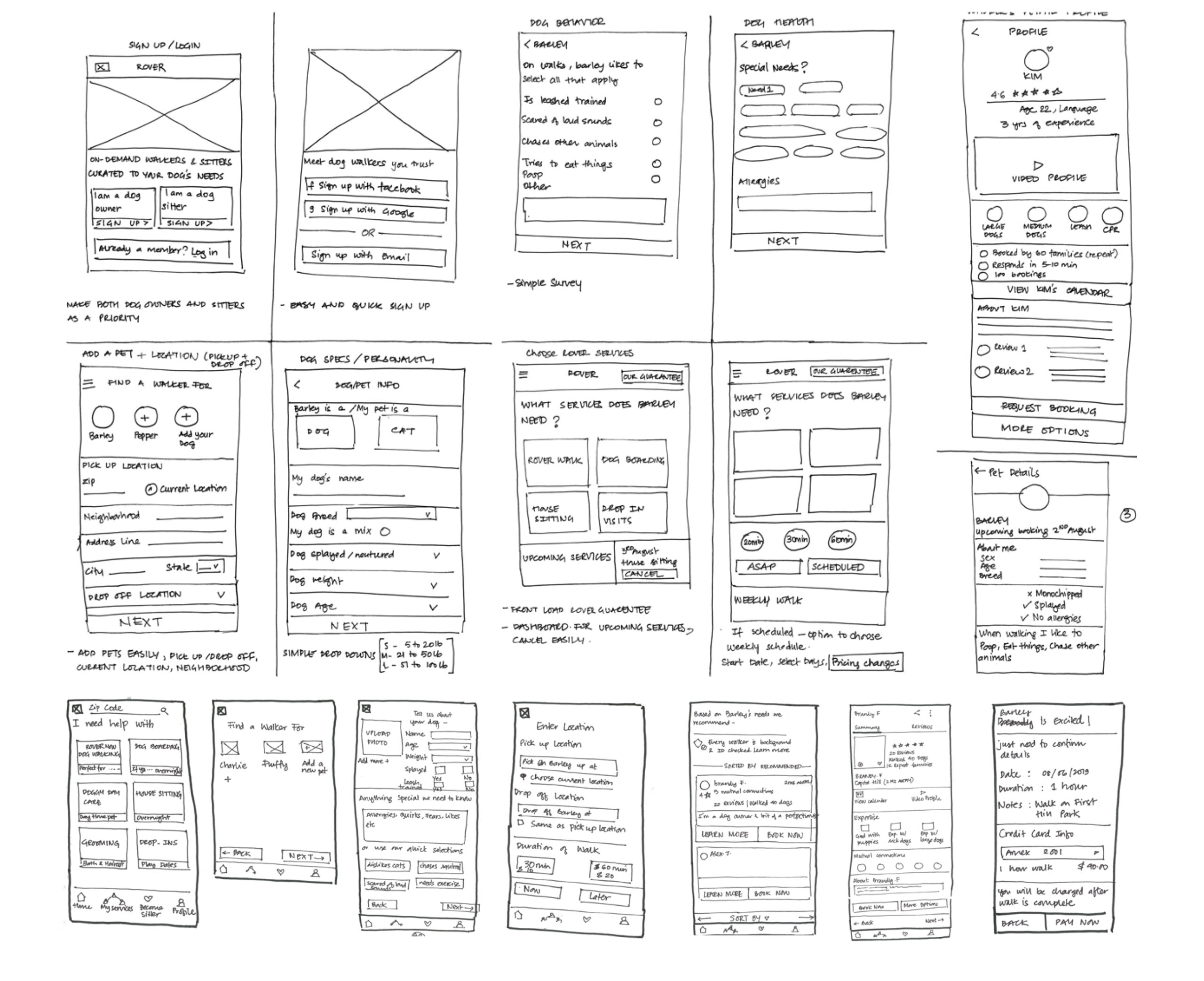
Sketches
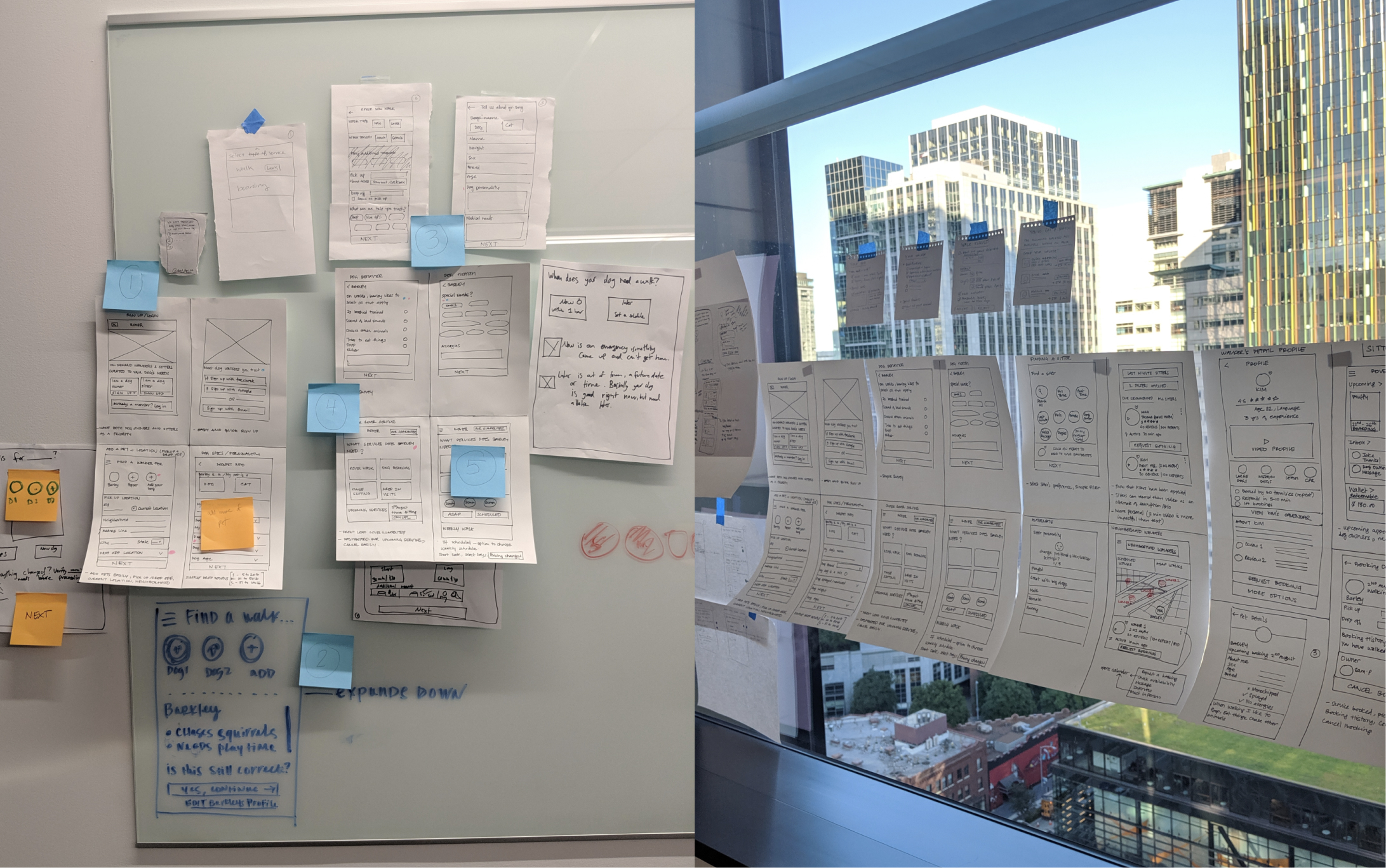
Crazy 8's & dot voting

Low fidelity wirefranes
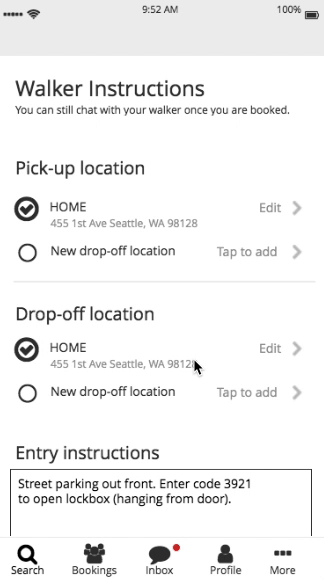
Low fidelity prototyping & testing
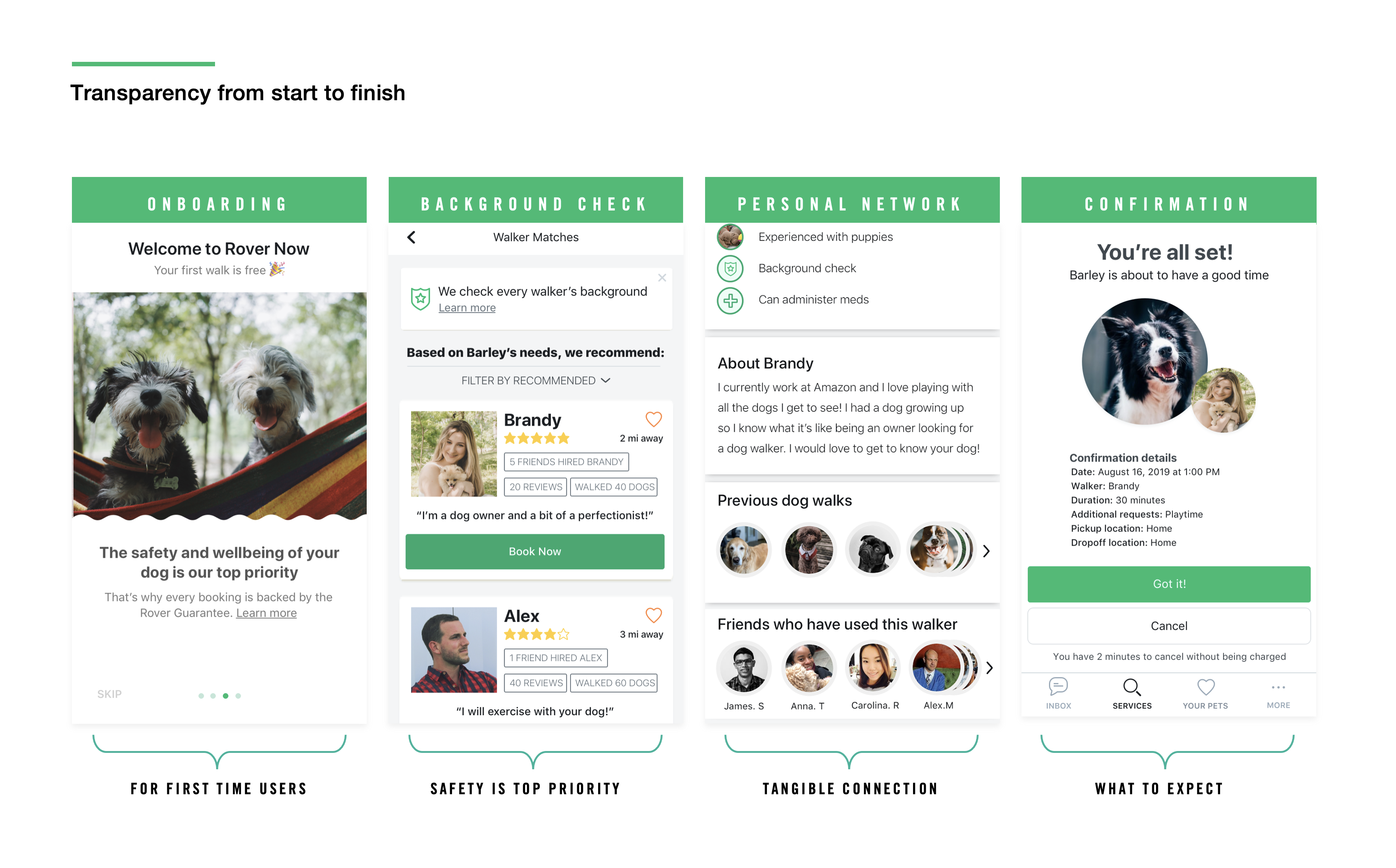
User Testing
We conducted 19 usability tests. Rover measures conversation rates using StR (search-to-request) and NtB (need-to-book) numbers. Since we couldn't use these metrics, I recommended testing users' perceived level of trust and how likely they were to use the new experience.
100% of users tested found the experience enjoyable and trustworthy for finding a walker.

Rover Now user
"I use Rover Now all the time and really loved this experience. It makes me trust Rover a lot more with my dogs. It's going to be hard going back to the previous experience".
Director of Design, Rover
"You did a great job of thinking horizontally, rather than in small steps. I love the idea of more granular preferences on the owner's side and adding a walker video to this experience."
SVC instructor
"You have a mind that likes to solve hairy problems. You have a strong talent for leadership and it comes across in everything you do. You are calm, kind, yet clear. These skills will take you far!
© Niyati Gandhi Design 2021